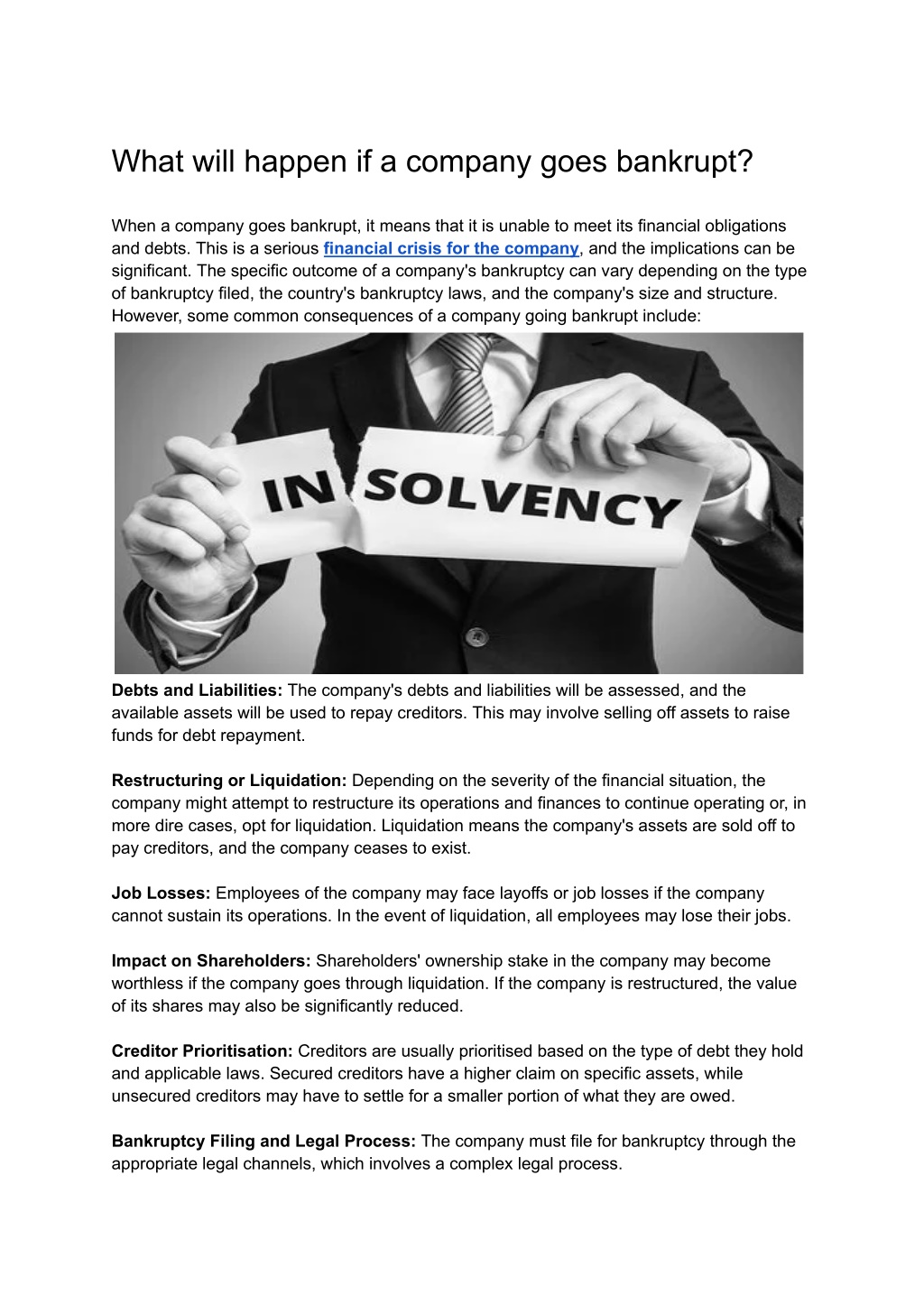Revealing the Process: What Does It Mean for a Company to Go into Administration?
Revealing the Process: What Does It Mean for a Company to Go into Administration?
Blog Article
The Process and Consequences of a Firm Getting Into Management
As a business faces financial distress, the decision to go into management marks an important juncture that can have far-ranging implications for all included celebrations. The procedure of going into management is elaborate, entailing a series of actions that intend to browse the business towards potential recuperation or, sometimes, liquidation. Understanding the roles and responsibilities of an administrator, the influence on numerous stakeholders, and the legal responsibilities that come into play is necessary in comprehending the gravity of this scenario. The repercussions of such a relocation ripple beyond the firm itself, forming its future trajectory and influencing the broader organization landscape.

Summary of Business Administration Refine
In the realm of business restructuring, a crucial initial action is gaining a detailed understanding of the complex business management procedure. Company administration refers to the formal insolvency procedure that intends to rescue a monetarily distressed firm or attain a better result for the firm's creditors than would certainly be possible in a liquidation scenario. This procedure entails the consultation of an administrator, who takes control of the company from its directors to examine the economic situation and identify the most effective course of action.
Throughout management, the firm is provided defense from lawsuit by its financial institutions, giving a halt duration to develop a restructuring strategy. The administrator functions with the company's management, financial institutions, and various other stakeholders to develop a technique that may entail selling the business as a going worry, reaching a company volunteer plan (CVA) with creditors, or eventually positioning the firm right into liquidation if rescue attempts verify useless. The main objective of firm management is to make best use of the return to lenders while either returning the company to solvency or closing it down in an orderly fashion.
Functions and Responsibilities of Administrator
Playing a crucial role in managing the business's financial events and decision-making processes, the administrator assumes substantial duties during the corporate restructuring process. The main duty of the administrator is to act in the finest passions of the firm's lenders, aiming to achieve one of the most favorable result possible. company administration uk. This involves conducting a detailed evaluation of the company's economic circumstance, establishing a restructuring strategy, and executing approaches to optimize go back to lenders
In addition, the administrator is accountable for communicating with different stakeholders, including employees, distributors, and regulatory bodies, to guarantee transparency and conformity throughout the administration process. They must additionally interact effectively with investors, offering routine updates on the firm's progress and seeking their input when required.
In addition, the manager plays a crucial duty in taking care of the everyday procedures of the service, making crucial decisions to keep connection and preserve worth. This includes examining the viability of various restructuring alternatives, bargaining with financial institutions, and eventually leading the business in the direction of a successful exit from management.
Influence On Firm Stakeholders
Presuming an important setting in looking after the business's decision-making processes and financial events, the administrator's activities throughout the corporate restructuring process have a straight effect on various firm stakeholders. Investors may experience a decline in the worth of their financial investments as the company's financial difficulties are addressed. Financial institutions, including lending institutions and providers, might encounter unpredictabilities pertaining to the payment of debts owed to them. Staff members often come across work insecurities as a result of potential discharges or changes in job conditions as part of the restructuring initiatives. Clients might experience disturbances in solutions or product availability during the management procedure, affecting their trust and loyalty in the direction of the firm. Additionally, the neighborhood where the firm runs could look at here now be influenced by potential task losses or changes in the business's procedures, influencing neighborhood economic climates. Effective communication from the administrator to stakeholders is vital in managing expectations, mitigating worries, and cultivating openness throughout the management procedure.
Lawful Ramifications and Obligations
During the process of company management, careful consideration of the click over here now lawful implications and commitments is paramount to make sure compliance and shield the interests of all stakeholders included. When a company gets in administration, it activates a collection of legal requirements that should be adhered to.
Additionally, legal effects arise worrying the treatment of staff members. The manager has to follow employment laws pertaining to redundancies, staff member civil liberties, and obligations to give required details to employee representatives. company administration uk. Failure to abide by these legal demands can lead to lawsuit against the business or its administrators
In addition, the business entering administration might have contractual obligations with numerous events, including providers, property owners, and consumers. In essence, understanding and satisfying lawful commitments are critical facets of browsing a company with the management process.
Strategies for Firm Recuperation or Liquidation
In considering the future direction of a firm in management, strategic preparation for either healing or liquidation is essential to chart a sensible path onward. When intending for company recovery, crucial methods might consist of conducting an extensive evaluation of business procedures to determine ineffectiveness, renegotiating leases or contracts to boost capital, and carrying out cost-cutting procedures to improve success. Furthermore, looking for new investment or financing alternatives, diversifying profits streams, and concentrating on core expertises can all add to an effective healing plan.
On the other hand, in scenarios where business liquidation is deemed one of the most suitable training course of activity, strategies would certainly include optimizing the value of possessions through effective asset sales, settling arrearages in an organized fashion, and following lawful requirements to guarantee a smooth winding-up process. Interaction with stakeholders, including creditors, consumers, and staff members, is vital in either scenario to keep transparency and manage expectations throughout the recovery or liquidation process. Ultimately, picking the best method depends on an extensive analysis of the firm's monetary wellness, market position, and long-lasting prospects.
Conclusion
Finally, the procedure of a firm going into management involves the appointment site of a manager, who takes on the responsibilities of managing the business's events. This process can have significant effects for various stakeholders, consisting of lenders, staff members, and shareholders. It is very important for companies to carefully consider their alternatives and methods for either recuperating from monetary difficulties or continuing with liquidation in order to mitigate potential legal implications and commitments.
Firm management refers to the official bankruptcy treatment that intends to rescue a monetarily troubled firm or achieve a far better outcome for the business's financial institutions than would be possible in a liquidation situation. The manager functions with the business's monitoring, lenders, and other stakeholders to devise a strategy that may entail selling the service as a going problem, getting to a company voluntary setup (CVA) with lenders, or inevitably placing the company into liquidation if rescue attempts prove useless. The main goal of company administration is to maximize the return to lenders while either returning the company to solvency or closing it down in an orderly fashion.

Report this page